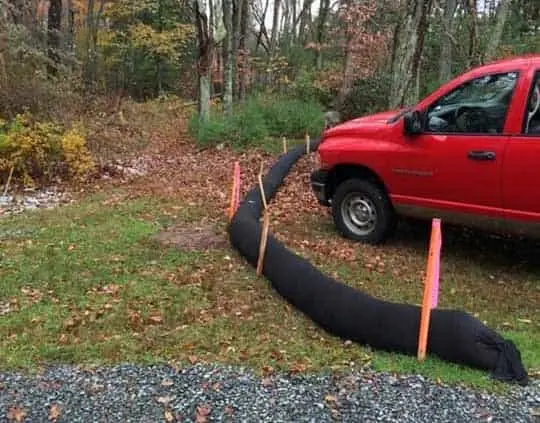A silt sock is a tube-like structure made of a permeable fabric material that is used to filter and retain silt and sediment on construction sites. It is typically installed in areas where erosion control is needed, such as around a stormwater outfall or along a slope. The sock is filled with a mixture of sand and soil, which helps to filter out sediment and prevent it from entering nearby water bodies.
A silt fence, on the other hand, is a barrier made of a fabric material that is used to contain and filter sediment on construction sites. It is typically installed around the perimeter of a construction site or along a slope to prevent erosion and sediment runoff. Like the silt sock, the silt fence is filled with a mixture of sand and soil to help filter out sediment.
Silt socks and silt fences are both erosion control devices that are used to filter sediment and other materials from stormwater runoff. However, there are some key differences between the two:


Shape
Installation
Effectiveness
Both silt socks and silt fences are effective at filtering sediment and other materials from stormwater runoff, but silt socks may be more effective at trapping smaller particles and may be better able to withstand heavy flows of water.
Cost
Silt socks may be less expensive to install than silt fences, as they do not require as much labor or materials to set up.
Applications
Both silt socks and silt fences are commonly used in construction sites and other areas where erosion is a concern, but silt socks may be more suitable for use in areas with limited space or where a lower profile is desired. Silt fences are typically used in larger areas or along longer stretches of land.



